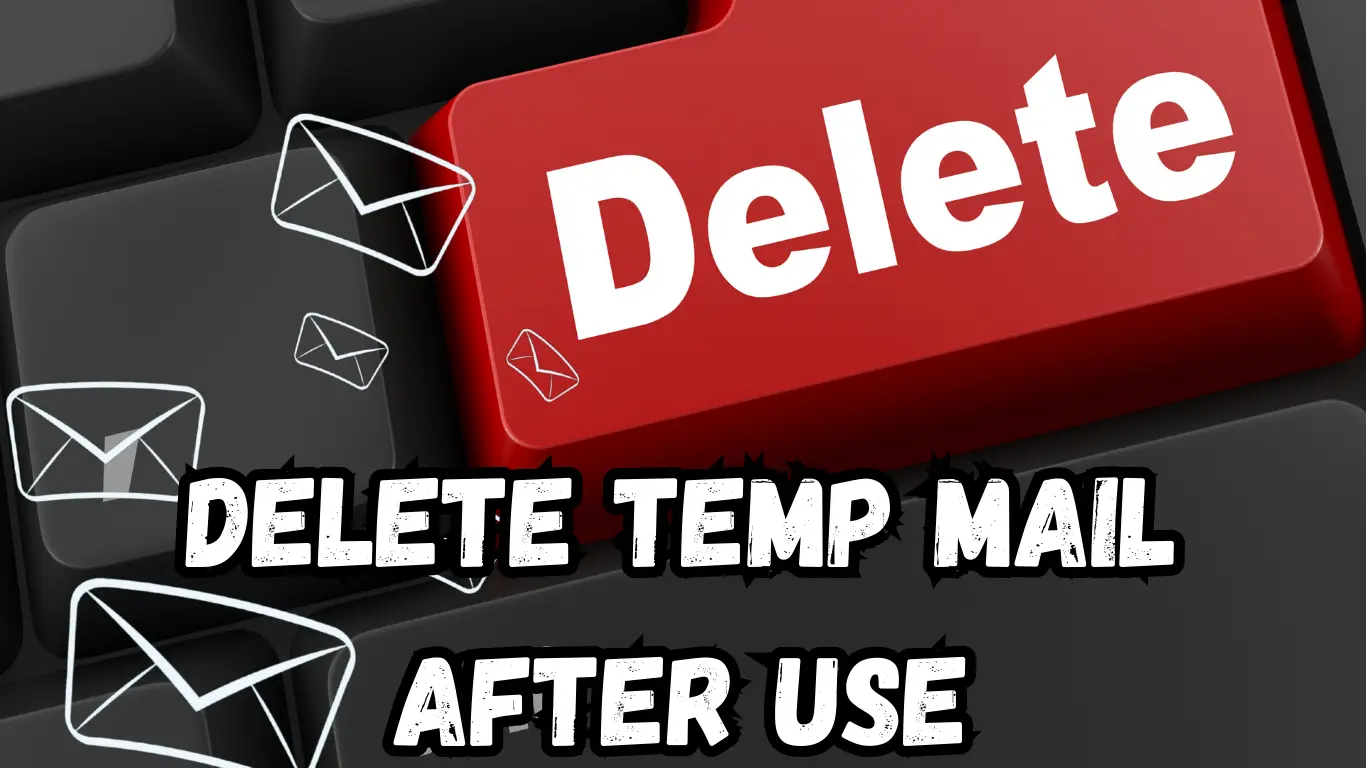

How to Delete Temp Mail After Use (Complete Guide)
Learn how to delete temp mail after use to keep your online activity safe and private. Disposable email addresses are convenient, but proper deletion is essential for maintaining your digital security.
What Is Temp Mail?
Temporary email services provide disposable email addresses that help you avoid spam, protect your privacy, and bypass registration requirements without revealing your personal email address. These services are designed to be short-lived, but knowing how to properly delete them ensures your information remains secure.
Why Delete Temp Mail After Use?
Properly deleting temporary email addresses is crucial for several reasons:
Prevent unauthorized access: Even after you're done using them, active temp mail accounts could potentially be accessed by others.
-Protect personal information: Any information associated with the temporary email could be compromised if the account remains active.
-Avoid data breaches: If the temp mail service experiences a breach, your temporary account could expose any data linked to it.
- Maintain digital hygiene: Regularly cleaning up your digital footprint reduces your online vulnerability.
How to Delete Temp Mail After Use
The deletion process varies depending on the service you're using. Here's how to handle different types of temporary email services:
Auto-Deleting Services
Most temporary email services automatically delete emails and accounts after a set period:
1. Time-based deletion: Services like 10MinuteMail automatically delete emails after 10 minutes (or the specified time).
- How it works: Simply close the browser tab or navigate away from the site. The email address and all messages will be automatically deleted after the time expires.
2. Session-based deletion: Services like TempMailo delete emails when you close the browser tab.
- How it works: Your temporary email exists only while the tab is open. Closing the tab permanently deletes the address and all messages.
Services with Manual Deletion Options
Some services allow you to manually delete your temporary email before the automatic deletion:
1. Guerrilla Mail:
- Look for the "Delete" or "Reset" button on the interface
- Click it to immediately delete your current email address and generate a new one if needed
2. YOPmail:
- Click the "Delete inbox" option in the interface
- This will immediately remove all messages and the temporary address
3. Mailinator:
- While Mailinator inboxes are public and temporary, you can't manually delete them
- They automatically expire after a few days of inactivity
Browser Extension Temp Mail
If you're using a browser extension for temporary email:
1. Click the extension icon in your browser
2. Look for a "Delete," "Reset," or "New Address" button
3. Click it to generate a new temporary address and discard the old one
Mobile App Temp Mail
For temporary email apps on mobile devices:
1. Open the app
2. Navigate to settings or the main interface
3. Look for options like "Delete," "Reset," or "New Address"
4. Tap to delete your current temporary email
Best Practices for Deleting Temp Mail
Follow these tips to ensure your temporary emails are properly deleted:
1. Always log out: If the service requires login, make sure to log out after use.
2. Clear browser data: After using temp mail, clear your browser cache and cookies to remove any traces.
3. Use private browsing: Consider using incognito or private mode when accessing temporary email services.
4. Verify deletion: Some services show a confirmation when the email is deleted. Look for this confirmation.
5.Avoid saving passwords: Never save passwords for temporary email services in your browser.
6. Use different addresses: For different services, use different temporary email addresses to prevent correlation.
What Happens When You Delete Temp Mail?
When you delete a temporary email address:
- The email address becomes immediately inactive
- All messages in the inbox are permanently deleted
- Any future emails sent to that address will bounce back
- The service may recycle the address after a certain period
Conclusion
Deleting temp mail after use is a simple but essential step in protecting your online privacy and security. Most temporary email services are designed to be self-destructing, but knowing how to manually delete them gives you extra control.
Remember that temporary email services are designed for short-term use only. For important communications, always use a permanent, secure email address with proper protection.

